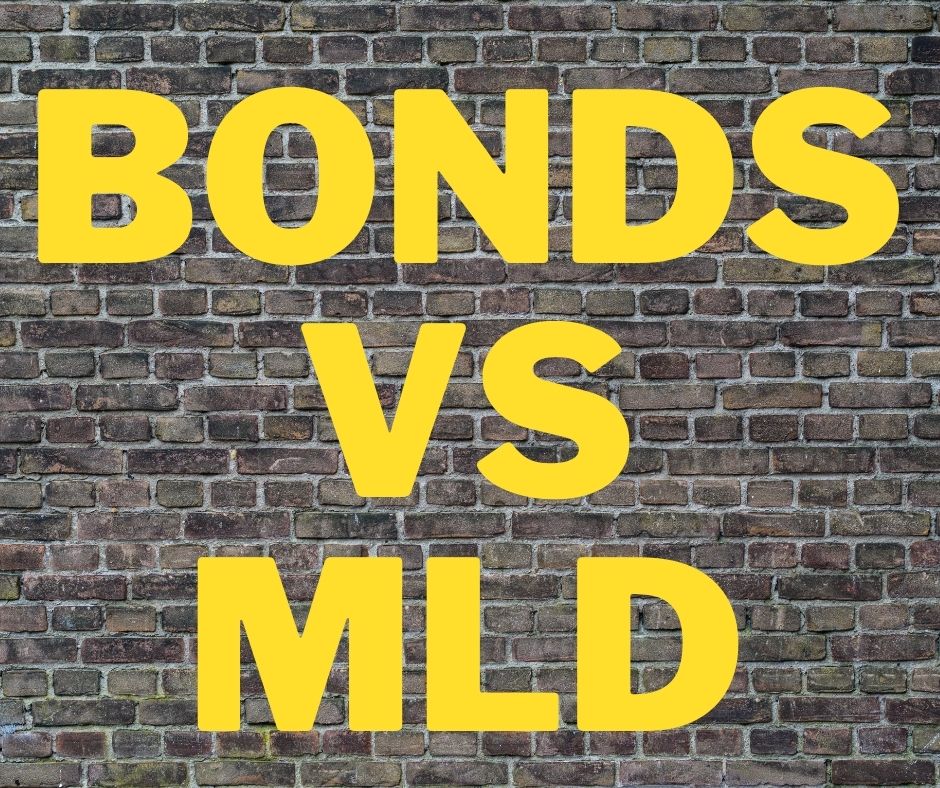Bonds vs MLD (Market Linked Debentures)
- 3 August 2021 | 2366 Views | By Abhinav Mishra

When it comes to investing and getting fixed returns, most investors prefer bonds. The problem with bonds is that returns are lower, and the ticket size is big. The next option for investors is equity. However, equity comes with high risk, and hence most investors avoid it. Market-linked debentures (MLDs) combine the two – bonds and equity.
Read more about bonds here.
What is an MLD in finance?
Debentures are a type of bond, but they are unsecured (no collateral). MLDs are a type of debt security that gives you a return based on the performance of an underlying asset like index, government securities, etc. The returns are not defined and guaranteed like bonds but linked to the underlying security. If the underlying asset is doing well, the return on MLD will be higher. If the underlying asset is not doing well, the return will be lower. The tenure of MLD ranges between 13 months and 60 months, and the average tenure of MLDs is 2.89 years.
Let us take a couple of examples to understand it better –
MLD option 1
- The underlying asset is NIFTY 50 with 2-year tenure.
- The condition for payment is – if the final fixing level of the underlying asset is greater than 75%, then the return will be 8%. If lower, the return will be 4%. It means if NIFTY 50 at the start of the MLD was at 16000 and if close above 12000 (75%) on maturity, the returns (also known as a coupon) will be 8%, and if it closes below return will be 4%.
MLD Option 2
- The underlying asset is G-sec, and the initial fixing price is 100.
- The payment condition is – if the final fixing level is less than 80, then the return will be 8%. If the final fixing price is between 25 and 75, the return will be 7%, and if less than 25, the coupon will be 0%.
In both the above examples, the chance of conditions not being fulfilled is highly unlikely.
MLDs have become popular in the last few years as is evident from the below figure.
There are no guidelines as to what can qualify as an underlying asset in MLDs. But most of the MLDs available in the market have an underlying asset as NIFTY 50 and G-secs/bonds. In 2017, 95% of the MLDs had underlying assets as Nifty 50. The situation has changed, and now the NIFTY 50 percent is around 63%, while the remaining 37% is for G-sec and bonds.
Why are markets linked to debentures?
When you plan to invest in direct equity by buying a stock, the downside is high. You can lose a significant portion of your capital. Hence, the market-linked debentures came into existence. They ensure –
- your capital is protected, and the risk is reduced compared to pure equity investment.
- you get a higher return than the traditional fixed income scheme like fixed deposits and other debt instruments.
Type of MLDs
There are many types of MLDs, but at a high level, there are two types of MLDs:
Variable coupon rate – The coupon rate varies as per the performance of the underlying asset. For example, an issuer issues MLD with three years duration, and with the condition – you will receive a return of 40% of the upward movement of the Nifty. Now at maturity, if the NIFTY has moved up by 40 percent, you will receive 40 percent of 40 percent i.e 16%. If the NIFTY closed in negative from the initial period, you don’t receive any coupon (return). However, you get back the principal amount.
Fixed Return Coupon – In this type, the returns are fixed, but depend on the market condition. For example, if NIFTY rises more than 40% at the time of maturity (from the initial fixing level), you will receive a return of 15%. However, if NIFTY rises 40% or less, you will not receive any return, only the principal amount.
How are MLDs taxed?
Another reason MLDs are popular is that they are very tax effective. If your holding period of MLD is more than one year, there is a Long Term Capital Gain (LTCG) taxed at 10%. With bonds, the capital gains are taxed at 20% (with indexation benefits), and to qualify as long-term, you need to stay invested for 36 months.
The risk associated with MLDs
You should know the risk associated with MLDs before you invest in them. Below are two types of risk linked with MLDs:
The market condition does not get fulfilled – You only get returns if the market condition is fulfilled. If not, you only get your principal amount back. If you invest in a 3-year MLD and do not get a coupon, you lose money if you factor in inflation.
Issuer’s Profile – You should always check the profile of the issuer issuing MLDs. Most structures in MLDs are principal-protected, but if the issuer is unable to make the payment, you may end up losing your capital.
Explore debt-based investing: Wint Wealth: Debt Investment for the Masses










